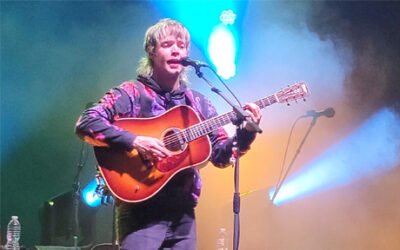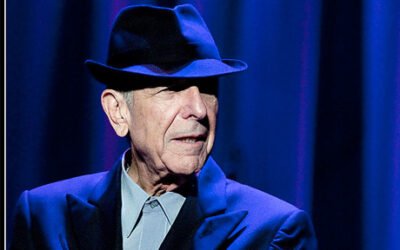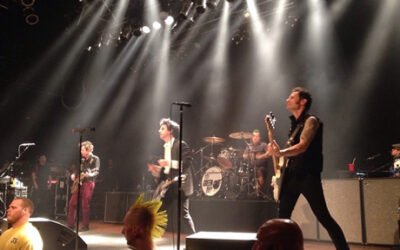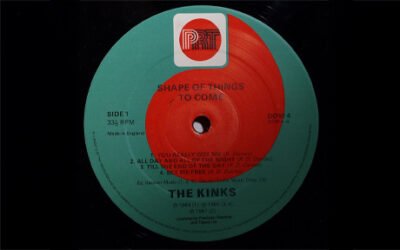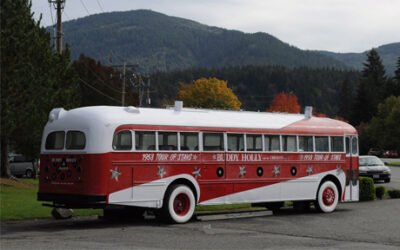Woodstock 1999: A Cultural and Musical Catastrophe
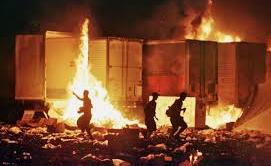
I grew up in the 1950s, 1960s, and 1970s —a special time, filled with tumultuous change, but infused with an ethos that was embodied in the original 1969 Woodstock festival of love, peace, and music, which moved the emotions.
Last night I viewed Natick’s “Trainwreck – Woodstock 99.” I confess to being shocked by what I saw.
The Woodstock ’99 festival ran from July 22-25, 1999, at Griffiss Air Force Base in Rome, New York, to mark the 30th anniversary of the famous 1969 Woodstock festival.
Organisers established Woodstock ’99 as a tribute to the 30th anniversary of the Woodstock festival that originally occurred in 1969. The event is intended to preserve the spirit of peace and love from the original festival by adopting modern musical elements.
The event was created by Michael Lang, who co-founded the original Woodstock Festival. Unfortunately, the event’s objectives became secondary to its operational issues, commercial interests, and dangerous crowd behaviour, which transformed the festival.
The original Woodstock ’69 festival took place at a rural farm in Bethel, New York. Woodstock ’99 occurred on asphalt grounds at Griffiss Air Force Base in Rome. The site selection focused on its ability to host many people and provide base facilities, but it failed to capture the natural beauty of the original festival location.
This change of venue indicated a fundamental departure from the original Woodstock philosophy. Woodstock ’99 targeted profit growth through ticket sales, combined with merchandise sales and corporate sponsorships , as its primary purpose. Some attendees felt alienated from the original Woodstock experience.
The festival that started as a tribute to peace, love , and music turned into a disastrous event. The shocking aspect of this event was not just the general lack of organization, but the incredibly violent and testosterone-fuelled actions of much of the crowd,
1999 was a different era from the 1960s and 1970s. The behaviour of the crowd at Woodstock 99 was attributed to the very real lack of organization, price gouging, heat, inadequate facilities, and poor security. However, faced with very similar challenges at Woodstock in 1969, the attendees exhibited exceptional tolerance to the situation around them. The 1999 festival goers were of a different kind.
Coupled with all the logistical issues, the musical acts at Woodstock ’99 acted as primary triggers for how the audience behaved.
Limp Bizkit, Korn, and the Red-Hot Chili Peppers performed intense, aggressive shows that resonated with the emotional state of the late 1990s youth movement. These performances acted as catalysts for crowd disturbances during the festival.
Fred Durst from Limp Bizkit faced criticism after performing ‘Break Stuff’ at the festival since the song reportedly inspired violent actions from the audience. Durst later explained his lack of understanding of the violent events happening in the crowd through multiple interviews.
During the Red-Hot Chili Peppers’ final performance at Woodstock ’99 the audience started bonfires while the band performed Jimi Hendrix’s ‘Fire’, marking the complete breakdown of order. The harsh musical content, severe heat, expensive food and water supplies, and insufficient sanitation facilities at the festival created an explosive atmosphere that fuelled the audience’s anger.
The failure of Woodstock ’99 to uphold the values of the original festival has triggered debates about artists’ and organizers’ accountability and musicians’ power to influence crowds at large events. The Netflix documentary Trainwreck: Woodstock ’99, together with the podcast Break Stuff: The Story of Woodstock ’99, examines the intricate history of the festival through its connection to major cultural transformations in the years leading up to 2000. Music and acts that fed the underlying anger, coupled with poorly organized and socially tense conditions, led to destructive chaos rather than unity, peace, and love.
Woodstock ’99 provided its audience with the rock, metal, and hip-hop music of late 1990s performers, including Korn, Limp Bizkit, Rage Against the Machine, Red Hot Chili Peppers, and Metallica. The original Woodstock in 1969 featured psychedelic rock and folk music, but
Woodstock ’99 showed a preference for modern alternative rock alongside nu-metal and the aggressive music of that time. The selection of musical acts shaped how attendees felt and behaved throughout the event. The aggressive stage performances by Limp Bizkit and Korn elicited intense reactions from their audience members.
The audience became violent during Limp Bizkit’s performance of “Break Stuff” because the high-energy show led to destructive fan behaviour. The bands maintained a stance toward violence; their musical content connected with audience members’ anger, which strengthened the intense emotional state of the crowd.
The discovery of “mud” areas that contained human waste proved the festival organizers had not planned for essential hygiene requirements. The poor conditions caused by insufficient facilities drove attendees to anger and dissatisfaction, which ultimately destroyed the festival. The expensive prices for food and water supplies added to the growing dissatisfaction among festivalgoers.
The last two days of Woodstock ’99 were defined by violence, vandalism, and disorder throughout the festival site. The crowd set fires at different parts of the festival while looting vendor booths to demonstrate their discontent. The disorder escalated because security forces, including the “Peace Patrol” and private security personnel, faced overwhelming situations that prevented them from maintaining control. The most concerning feature of Woodstock ’99 was the extensive sexual violence that happened throughout the entire festival. Sexual
assaults, along with harassment incidents, spread throughout the festival grounds, while numerous cases occurred in densely populated areas like the mosh pits. Many people criticized the festival organizers for their failure to establish a secure environment at the event, especially for female attendees. This atmosphere was exacerbated by the young females attending joined in with reckless enthusiasm, many of them near- or totally naked, ignoring the general simmering violence and male angst and anger.
During the late 1990s, the rock music scene embodied in toxic masculinity, along with a culture of impunity, became “normal”. The failure to duplicate the original Woodstock spirit showed the difficulties of adapting countercultural values to a market-driven commercial environment. The festival served as a cultural and societal mirror during the late 1990s by showing how toxic masculinity spread and music became a commodity, and artists lost touch with their fans. The original festival’s values of peace, love, and music stand in direct opposition to the destructive atmosphere at Woodstock ’99. The event attempted to honour Woodstock ’69 but ended up representing negative aspects of festival culture while facing difficulties from commercialization versus music community values.
The aggressive musical performances, along with severe heat and the festival’s deterioration of logistics and food, created perfect conditions for widespread disorder. During Limp Bizkit’s “Break Stuff” performance, the ripped-down sound tower plywood to use for crowd-surfing,
fuelled by aggressive music content, was mirrored by the crowd reactions and the wider chaos of the event.
The performers at Woodstock ’99 actively used their stage presence to promote provocative conduct, which worsened the existing dangerous situation. The performer Kid Rock directed his audience to toss plastic water bottles at the stage during his performance, which some fans understood as a demonstration against festival water prices. The audience interpreted this performance as a rebellious gesture, but it intensified their aggressive behaviour. During their final act, the Red-Hot Chili Peppers performed “Fire” by Jimi Hendrix, which became a metaphorical representation of the event’s destructive state. The song “Fire became an unintended protest anthem for festivalgoers who used vendor booths, vehicles, and merchandise tents to fuel their bonfires.
The emotional and confrontational lyrics in Korn and Limp Bizkit songs enticed festivalgoers to vent their frustrations. The audience responded with aggressive intensity when Korn performed “Freak on a Leash” because this appeared to express their shared rage and power through the music. The psychological consequences of these performances remain difficult to quantify. Nonetheless, the out-of-control results of rage and destruction say much about this. The aggressive musical themes at Woodstock ’99 strengthened audience members’ collective rebellious attitude which resulted in extensive disorder throughout the event. The performers and audience of Woodstock ’99 started a feedback loop that transformed their negative emotions into more intense
anger. The musical performance of Limp Bizkit reached its peak when Fred Durst urged his fans to release their fury, yet many believed he was encouraging them to destroy property.
The communication between performers and their audience demonstrates that performers maintain significant control over their audience members’ actions through their words and performances.
The inadequate crowd control measures contributed to worsening the situation during the event. Security personnel faced challenges with crowd management because they lacked sufficient training to manage the energetic crowd movements effectively. In truth, a mosh pit consisting of 150,000 to 200,000 alcohol and drug-fuelled, testosterone-filled young men defies control of any sort. The chaotic performance energy managed to escape control, resulting in destructive behaviours that included the destruction of the sound tower and other infrastructure and vehicles, along with extensive arson attacks.
Music festival organisers learned valuable lessons from Woodstock ’99, which resulted in major changes for performer behaviour and audience safety standards at festivals. The inclusion of violence prohibition clauses has become standard practice for performers’ contracts in contemporary festivals. The aggressive stage performances at Woodstock ’99 demonstrated that event organisers need to arrange concerts that cater to the audience’s needs while also helping to maintain their overall well-being.
The organisation’s financial focus at the expense of safety generated an environment of violence, looting, and sexual assaults that reached peak levels. Multiple reports indicated that sexual assaults happened frequently in crowded locations such as mosh pits and campsites throughout the festival. The New York State Police reported four documented rapes, although the actual number possibly exceeded official records due to both underreporting and the disorderly state of the festival. Eyewitnesses saw women being dragged into mosh pits against their will, as onlookers either watched with excitement or ignored the situation.
The media coverage of Woodstock ’99 had a significant impact on how people understood the festival by emphasising the most dramatic elements of the event. The festival coverage in MTV, Spin and Rolling Stone concentrated on violent acts alongside sexual assaults and destructive fan behaviour to present a depiction of moral collapse. The media stories about the festival did not accurately represent the entire experience, as many attendees had positive times enjoying the music and making friends. The media coverage of Woodstock ’99 resulted in the negative stereotyping of musical genres such as nu-metal and hip-hop because they were blamed for instigating violence in the audience.
Glastonbury and Bonnaroo, along with other festivals, now implement anti-harassment policies that include designated safe spaces to tackle sexual violence at events. The festival industry now implements these changes because it wants to provide better experiences for attendees
Woodstock ’99 stands as a warning to festival organisers about the dangers of making money at the expense of safety and community values.
The music festival industry has carried the lasting effects of Woodstock ’99 as its fundamental legacy. Organisers had to rethink their safety systems, crowd control methods, and artist stage behaviour, which resulted in modern festivals adopting stricter rules and more inclusive practices.
The opening scenes of the aftermath of Woodstock ’99 in Netflix’s series were a sobering testament to the festival’s overall culture of impunity, demonstrating its inability to protect women and revealing deeper problems of toxic masculinity within music festivals during the late 1990s.
Yes, there were reports of rape, price gouging, and arson during the original 1969 Woodstock. However, overall, the general impact of Woodstock ’69 was that of a fond memory of a special time in history and extraordinary music, attended by a culture very different from that of Woodstock ’99. It lacked the widespread violence, the war-zone type destruction, and the sexual harassment that occurred during Woodstock ’99.
1966 was a distinct era, both culturally and musically. The concern is that those who attended Woodstock ’99 are now industry and political leaders of the USA. Have they modified their attitudes in any way in the past twenty-six years? One would hope so.
Related Podcasts
Strings of Evolution
Leonard Cohen: A Tapestry of Sound and Soul
Green Day – Their Punk Journey
The Kinks – Pioneers of British Rock.
The 1950s -The Birth of Rock and Roll
The Chicks – From Country Queens to Cultural Icons
Jeff Beck – A guitarist’s enduring legacy
The Beatles: A cultural phenomena
Review of Rocking America: How the All-Hit Radio Stations Took Over, by Rick Sklar
Rick Sklar’s memoir, “Rocking America,” offers a firsthand account of the rise of all-hit radio through his experiences as program director at WABC in New York.
A brief history of Hip-Hop
Reinventing Rock-’n-Roll
Taylor Swift – From Country Crooner to Pop Icon
The Legacy of Led Zeppelin
What else is happening in
Podcasts
The Journey of Robbie Williams
From Boy Band to Solo SuperstarRobbie Williams is a name that stands out in the world of pop music. His professional journey began in the early 1990s when he joined the British boys' group “Take That”. The group quickly became famous, becoming one of the most popular...
Strings of Evolution
The Artistic Journey of Billy Strings Billy Strings is currently performing to sold-out stadiums, despite traditional radio's slow recognition and underrepresentation of him. Billy Strings, who was born William Apostol and baptised in the small town of Muir in...
Leonard Cohen: A Tapestry of Sound and Soul
"Leonard Cohen: A Tapestry of Sound and Soul." Leonard Cohen's life is marked by numerous layers that reveal his rich background and diverse experiences. He was born in Montreal in 1934 in a Jewish family, which played an important role in forming his vision...
Green Day – Their Punk Journey
Green Day is a rock band that originated in California in the early 1990s. The band started as a small collective that played in local clubs and quickly gained recognition with their catchy songs and energetic stage presence. Green Day has emerged as one of the...
The Kinks – Pioneers of British Rock.
Even today, when I hear the Kink’s, they bring a smile to my face and joy to my soul. The Kinks are one of the most important, and much-underrated groups in the "British Invasion" that took over American music in the 1960s. Combined withflowing and catchy music that...
The 1950s -The Birth of Rock and Roll
The 1950's - The Birth of Rock & Roll. During the early 1950s, the American Popular Music Charts were mostly dominated by the leftover stars and bands from the big band era. Those included singers such as Doris Day, Frankie Laine, Frank Sinatra, Rosemary Clooney,...

